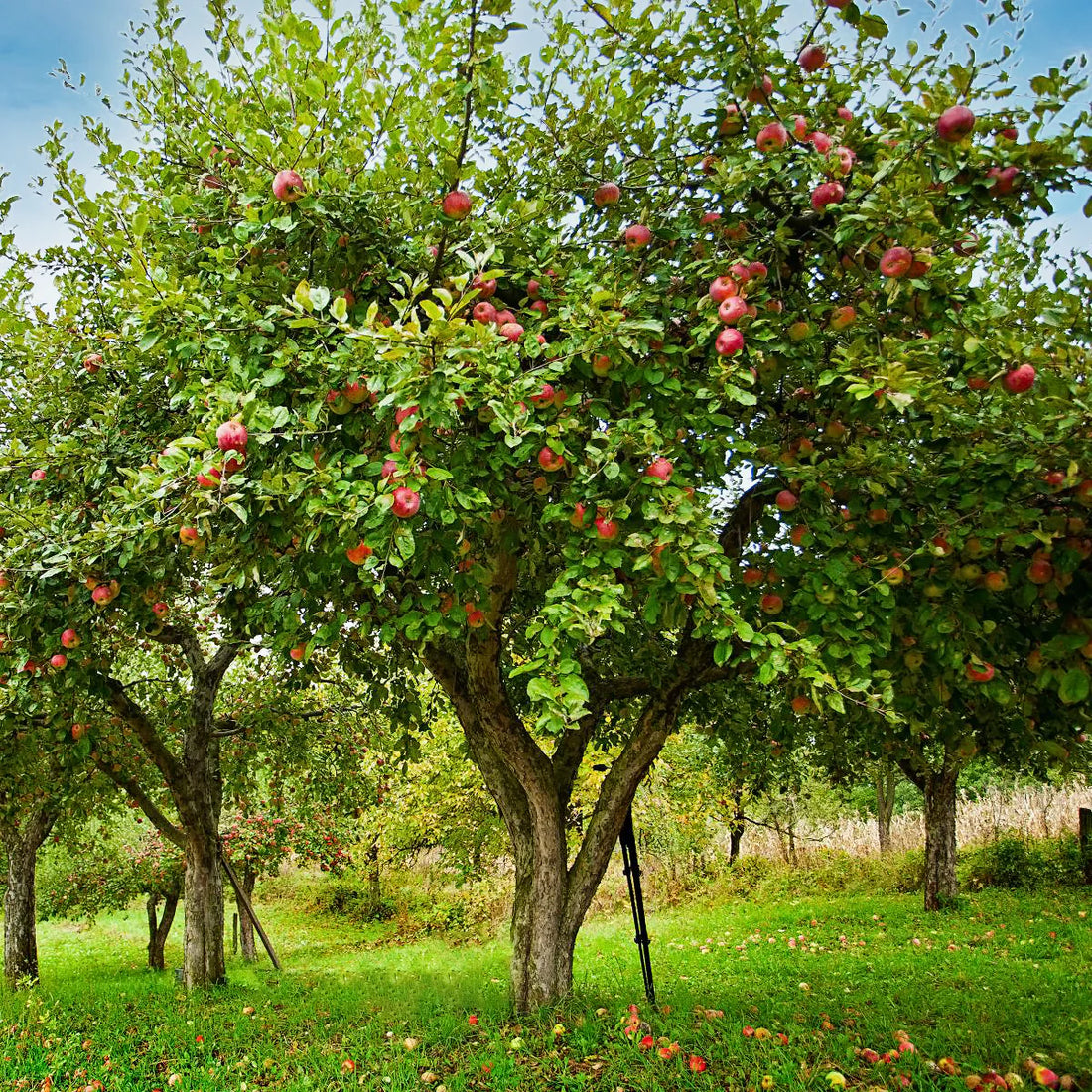

The Water Apple Tree, scientifically known as Syzygium aqueum and commonly referred to as the Rose Apple or Bell Fruit, is a tropical treasure celebrated for its juicy fruits, vibrant blooms, and ecological contributions. Native to Southeast Asi Read more
Trending
Trees for Corporates
Water Apple Tree: Tropical Delight, Nutritional Value, and Orchard Fav
You may also like
Corporate Plantations
Water Apple Tree Benefits
The Water Apple tree, also known as Syzygium, is a tropical gem offering juicy fruits, nutritional goodness, and ornamental appeal. It’s the orchard favorite that checks all the right boxes.
Nutritional Value of Water Apple
Water apples are hydrating, low-calorie fruits packed with vitamins A and C, antioxidants, and fiber. They’re the guilt-free tropical snack your diet craves.
Growing Water Apple Trees
Water apple trees thrive in sunny, warm climates with well-drained soil. Plant one, and you’ll soon have a tree bursting with juicy, delicious fruits.
Water Apple Tree for Hydration
These fruits are aptly named—they’re over 90% water, making them the perfect snack for staying cool and refreshed on hot tropical days.
Medicinal Uses of Water Apple
Water apples are traditionally used to soothe fevers, improve digestion, and promote hydration. They’re nature’s way of keeping you healthy and happy.
Water Apple Tree in Tropical Gardens
With glossy leaves and bright fruits, the Water Apple tree adds a touch of tropical elegance to any garden. It’s the tree that’s always in style.
Water Apple Tree Leaves
Rich in medicinal properties, the leaves are used in traditional remedies for managing diabetes and boosting immunity. They’re the tree’s hidden health treasure.
Water Apple for Weight Management
Low in calories and high in fiber, water apples are the snack that satisfies cravings while keeping your weight goals on track.
Water Apple Flowers for Pollinators
The fragrant blooms of the Water Apple tree attract bees and butterflies, making it a vibrant hub for pollinators in your garden.
Water Apple Tree in Orchard Planning
Water apple trees are a favorite for tropical orchards, producing abundant fruit with minimal maintenance. They’re the reliable star of any orchard.
Cultural Significance of Water Apple
The Water Apple tree symbolizes abundance and tropical beauty, often featuring in local traditions and cuisines. It’s more than a tree; it’s a cultural delight.
Water Apple for Eco-Friendly Gardening
Drought-tolerant and pollinator-friendly, the Water Apple tree is a sustainable choice for eco-conscious gardens. It’s the tree that’s as green as it is gorgeous.
FAQ
What is the Water Apple tree and why is it called a tropical delight?
The Water Apple tree, or Syzygium, is a tropical beauty known for its juicy, refreshing fruits. With its vibrant blooms and glossy leaves, it’s a delightful addition to any garden or orchard.
How can I grow a Water Apple tree at home?
Growing a Water Apple tree is easy. Plant it in sunny, well-drained soil, water regularly, and watch it flourish with minimal fuss in warm climates.
What are the nutritional benefits of Water Apple fruits?
Water apples are low-calorie, hydrating fruits packed with vitamins A and C, antioxidants, and fiber. They’re the tropical snack that’s both delicious and nutritious.
Can Water Apples help with hydration?
Absolutely! Water apples are over 90% water, making them the ultimate refreshing snack for staying cool and hydrated on hot days.
What are the medicinal uses of Water Apple fruits?
Water apples are traditionally used to soothe fevers, improve digestion, and promote hydration. They’re nature’s fruity remedy for better health.
Why is the Water Apple tree a favorite for tropical gardens?
With its glossy leaves and bright fruits, the Water Apple tree adds tropical elegance and shade to gardens. It’s always in season for style.
What role do Water Apple flowers play for pollinators?
Water Apple flowers attract bees and butterflies with their fragrance, making the tree a vibrant hub for pollinators in your garden.
Can Water Apple fruits support weight management?
Yes! Water apples are low in calories and high in fiber, making them a satisfying and guilt-free snack for weight-conscious foodies.
What are the uses of Water Apple tree leaves?
Water Apple leaves are used in traditional remedies to manage diabetes and boost immunity. They’re the unsung heroes of this tropical tree.
Why is the Water Apple tree perfect for orchard planning?
Water Apple trees produce abundant fruit with minimal maintenance, making them a favorite for tropical orchards and a reliable choice for fruit lovers.
What is the cultural significance of the Water Apple tree?
The Water Apple tree symbolizes abundance and beauty in many tropical regions, often featured in local traditions and culinary delights.
Is the Water Apple tree eco-friendly?
Definitely! The Water Apple tree is drought-tolerant, low-maintenance, and pollinator-friendly, making it a sustainable choice for green-thumbed gardeners everywhere.
Most Popular
Connect with us
-
👥 Corporates
If you are looking for:
- 🌲 Tree Plantation Events
- 📊 CSR Projects
📧 corporate@growbilliontrees.com
📞 +91 9699723523
💬 +91 9325931304 WhatsApp (Only)
🕒 Mon - Sat | 10am - 7pm IST
-
🧩 Tree Plantation NGOs
If you are looking for:
- 💰 Financial Assistance
- 🤝 Operational Support
📧 support@growbilliontrees.com
📞 +91 9699723523
💬 +91 9325931304 WhatsApp (Only)
🕒 Mon - Sat | 10am - 7pm IST
-
🌼 Individuals
If you are looking for:
- 👥 Group Tree Plantation Drive
- 🌳 Bulk Tree Plantation
📞 +91 9699723523
💬 +91 9325931304 WhatsApp (Only)
🕒 Mon - Sat | 10am - 7pm IST





















